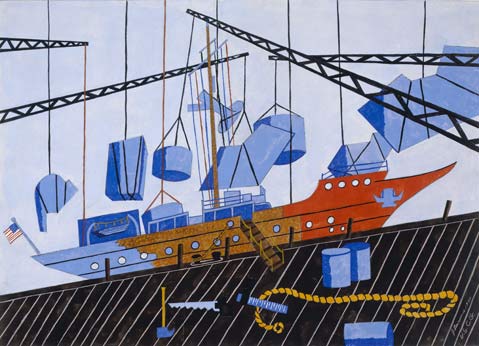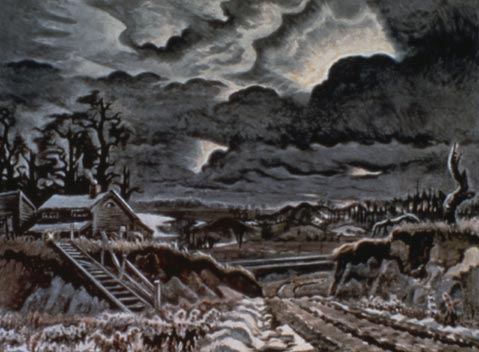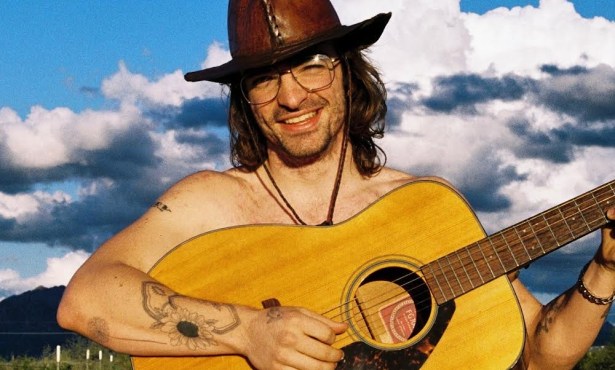American Master Drawings of the 20th Century
SBMA Shows Permanent Collection Works on Paper

Henry Luce approvingly dubbed the “American Century” as the period of American dominance on the world political stage from 1900 to 2000. As the name for this exhibition of approximately 75 works on paper from the Santa Barbara Museum of Art’s permanent collection, Luce’s term seems to raise more questions than it answers. And that’s a good thing. Here, an enigmatic, early self-portrait of Marsden Hartley as an emaciated, half-frozen denizen of the wintery Maine woods shares a room with a pair of lyrical watercolor flower studies by Charles Demuth and an intense George Grosz New York street view called “On the Avenue” (1934). Placed together, it becomes obvious that there’s not going to be a single thesis about this country and its art but rather a barrel of them.
Urban scenes predominate, and California, the Ashcan School, and American modernists all get their say in the conversation about what made the big American cities of the 20th century such definitive arenas for self-realization. In “Two Engines”(1937), Dan Lutz uses watercolors to capture the moment when locomotives meet, apparently head on, in a vibrant allegory of the ceaseless confrontation and sense of individual effort of modern urban life.

Elsewhere, Lyonel Feininger, Jacob Lawrence, Millard Sheets, and Boardman Robinson all cover the waterfront, disclosing those aspects of marine transportation that make the port cities into giant machines for the rapid circulation of people and goods. Even the show’s most grand and exuberant image, a magnificent Charles Burchfield called “Early Winter Twilight” (1943-1959), bears the traces of a deliberate and mechanical process of assembly, as it is a large painting made out of five joined sheets of paper. With its ominous clouds, ramshackle fence, and myriad conflicting planes that lead the eye downward and into a cloven ravine, “Early Winter Twilight” portrays the painter’s rich interior world as though it were as much a fact of life as anything that could be found in the Farmers’ Almanac. Burchfield, who has been getting a thorough reputation renovation thanks to the recent Hammer Museum/Whitney retrospective Heat Waves in a Swamp: The Paintings of Charles Burchfield, could be the emblem of what this show means by “an American century.” It’s a time of perpetual crisis met with visionary self-reliance.



